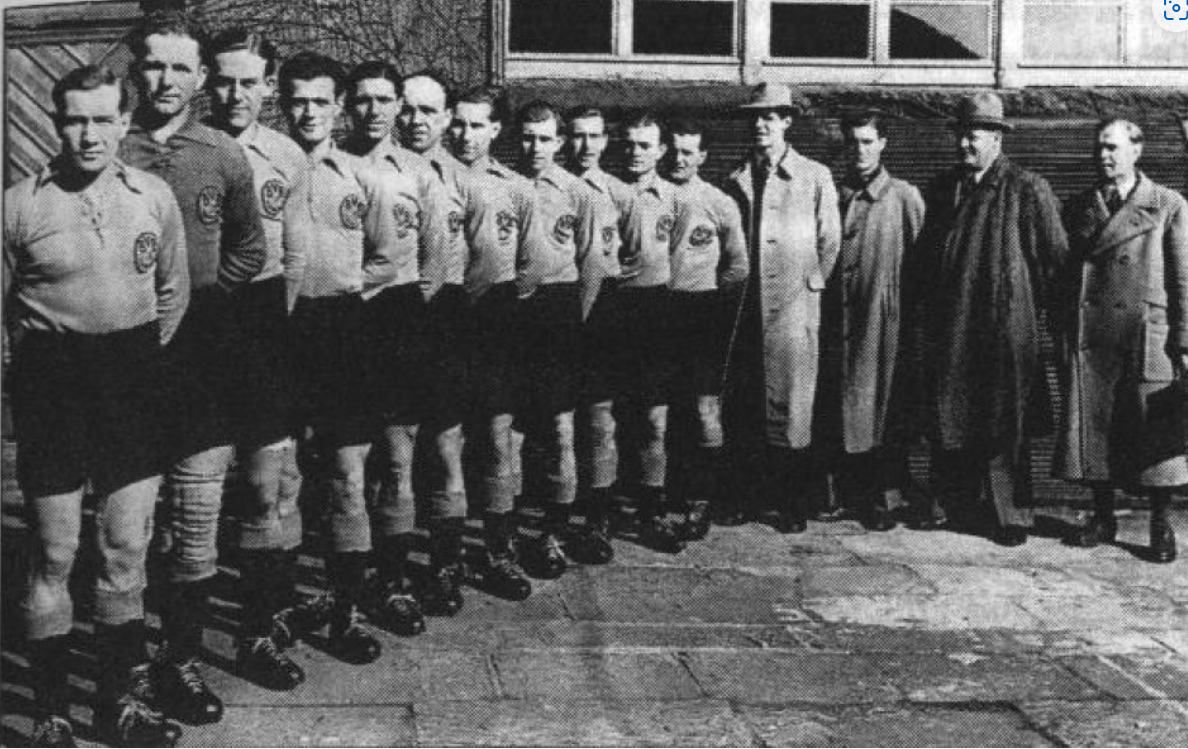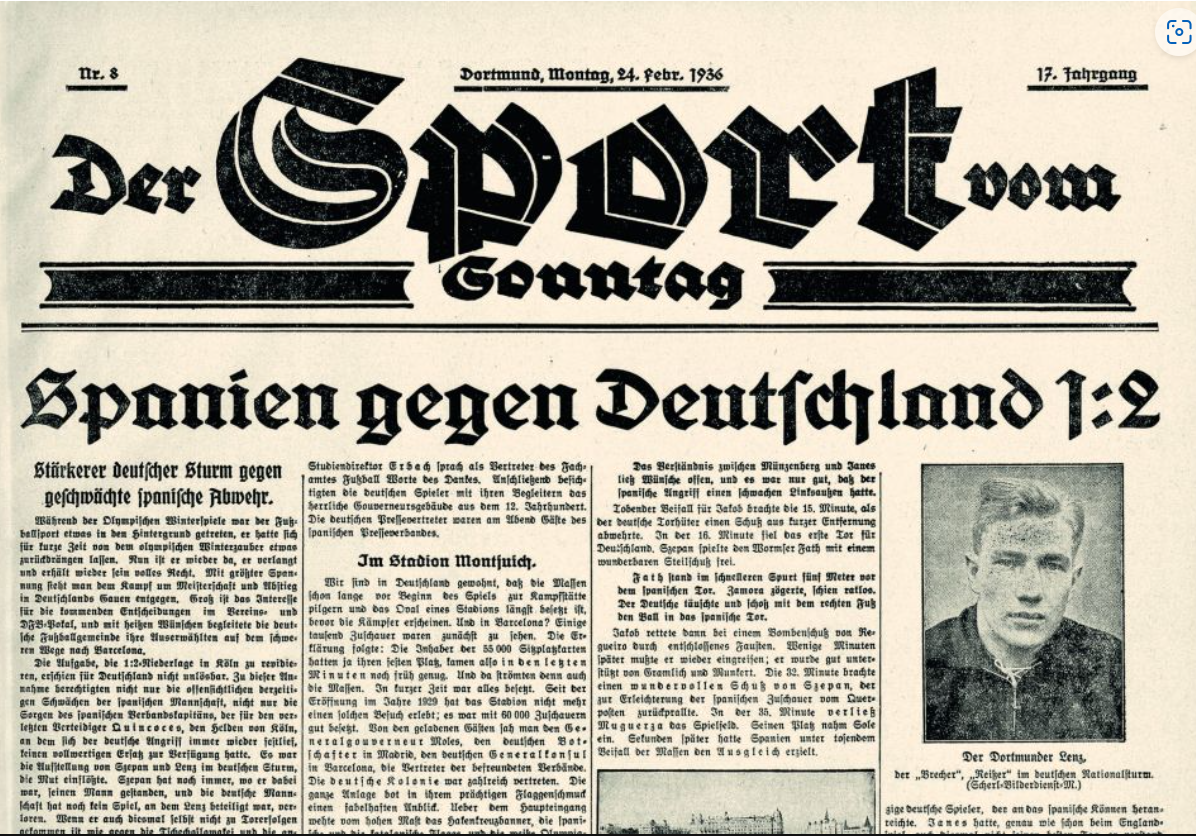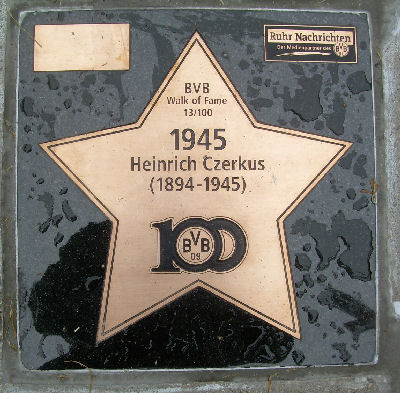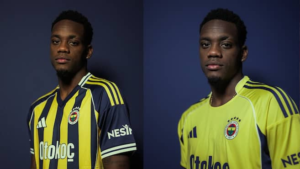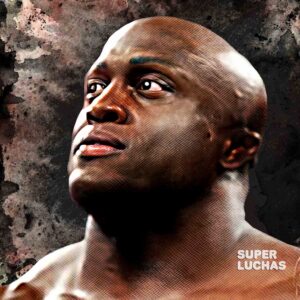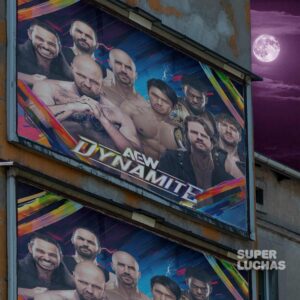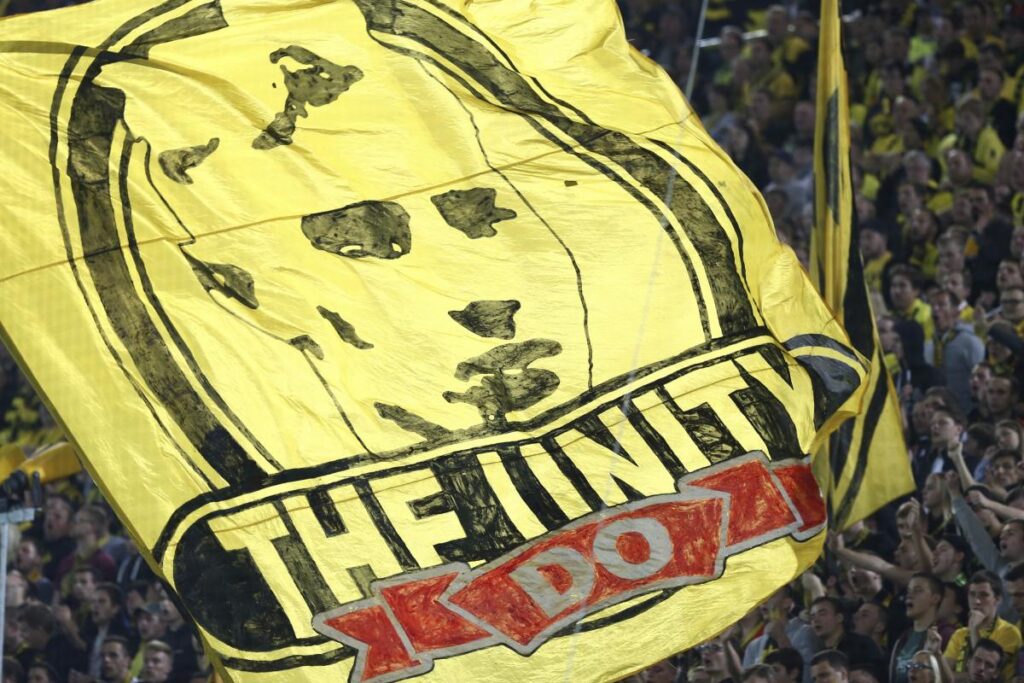
The Unity is the ultra group of Borussia Dortmund with greater presence in yellow hell. Although they declare themselves apolitical, their messages are openly anti -fascist and aligned with the left. They do not remain oblivious to what happens in the world. I believe you, sister! Solidarity with beautifulprayed a banner at the bottom of the Borussia stadium in full storm through the Rubiales case.
Party after game, in the old Westfalenstadion, The huge flag of The Unity. In its center, a face: that of August Lenz (1910-1988). It was the first big star in the club's history, a powerful scorer who became the only international of Borussia Dortmund before the Second World War. But his past is surrounded by questions.
On May 1, 1937, August Lenz received the number card 4.569.773 of the NSDAP, the National Socialist Party. It was not his first contact with the world of swastika that grew unstoppable in Germany. A year earlier, in 1936, he had actively participated in the electoral campaign in favor of Adolf Hitler. And, like many athletes from Borussia Dortmund in those years, Lenz was affiliated with Sturm department (SA), The voluntary militia of the party. It was a brown shirt.
The Borussia of August Lenz's years.
The doubt
The question that plans on the figure of Lenz It is the real role it had within Nazi Germany. Was it a symbolic affiliation? Was your affiliation forced or honorary? Or was he a convinced Nazi?
A few years ago an investigation was opened, in which the club agreed, but so far it has not been able to know much more. On that path, Lenz's interviews appeared in which he spoke of the mid -30s as “The best of my life.” The bottom of that phrase was none other than his best moment as a football player. Lenz was fascinated by him 1936 Olympic Berlinbut in his statements he always talked about the festive atmosphere that seized the German capital.
Lenz It was the German center striker the August 7, 1936the day Norway eliminated Germany before the eyes of much of the Nazi hierarchs, including Hitler. Remembering that day in an interview, Lenz explained that he collided that the chiefs of the game left after the second goal of Norway (minute 83), but denied that the fury that is told took over Hitler for that defeat, sealed with two goals from a Norwegian of obvious Jewish origin: Magnar Isaksen. “In the posterior banquet he encouraged us and did not take everything so tragically.” Those words about Hitler are considered very significant. But…
Chronicle in the Dortmund press of Spain 1-Germany February 2, 1936, with Lenz's photograph.
A Voraz scorer
If Lenz is a symbol in the Borussia Dortmund It is for its more than 1,000 games with your shirt. “He is the spoiled child of German football. A rude, aggressive striker, of violent shot,” he said about him when Germany traveled to Spain for the first time: 1-2 in Montjuïc, on February 23, 1936.
With 12 years he started playing for him Borussia, Although he did it as a goalkeeper. But then it was not played alone in a team. His story was marked when Borussia discovered him in a neighborhood match, before the TBV Mengedewith some boxes of beer at stake. Lenz's team won 14-0. Theirs were, for sure, seven goals, although there were those who told to a dozen.
Hero of the first ascent to the elite of Borussia (1936), His figure was enhanced when he rejected Schalke 04, the most powerful team in the region. Ernst Kuzorrastar of the Gelsenkirchen club, it was the one who tried to convince him and who made sure that the offer was stratospheric. But Lenz said no.
31 years. That was the time when August Lenz He was a player of the great Dortmund team. But until the day of his death, the December 5, 1988was linked to the club. “Black and yellow is our suit, we always have a cheerful mind, we are fun, we never discourage ourselves,” he said.
The gardener executed
There is another figure that, party by party, is remembered by the followers of the Dortmund: that of Heinrich Czerkus, One of its gardeners. Born in Minge (Lithuania), he was in charge of the lawn Club sports area Weisse Wiese (Pradera Blanca)the first stage of the club. From a young age, he linked to the labor movement. At the time of the Weimar Republic, he became elected councilor of Dortmund as a member of the Communist Party (KPD).
Heinrich Czerkus memory plate.
With the Nazis in power and the Illegaged communists, Wise He fought from within Germany against the regime. For years he escaped from the Gestapo, several times helped by Gerhard Busse, President of Borussia between 1928 and 1933, Nazi and brown shirt, but who used their influences to protect the club already persecuted.
The kind of gardener ended with the allied advance throughout Germany. He was arrested in the spring of 1945, and his name is among the 269 executed in what is known as The romergpark massacre. There are several memories to Heinrich Czerkus that can be found in the stadium and club facilities.
